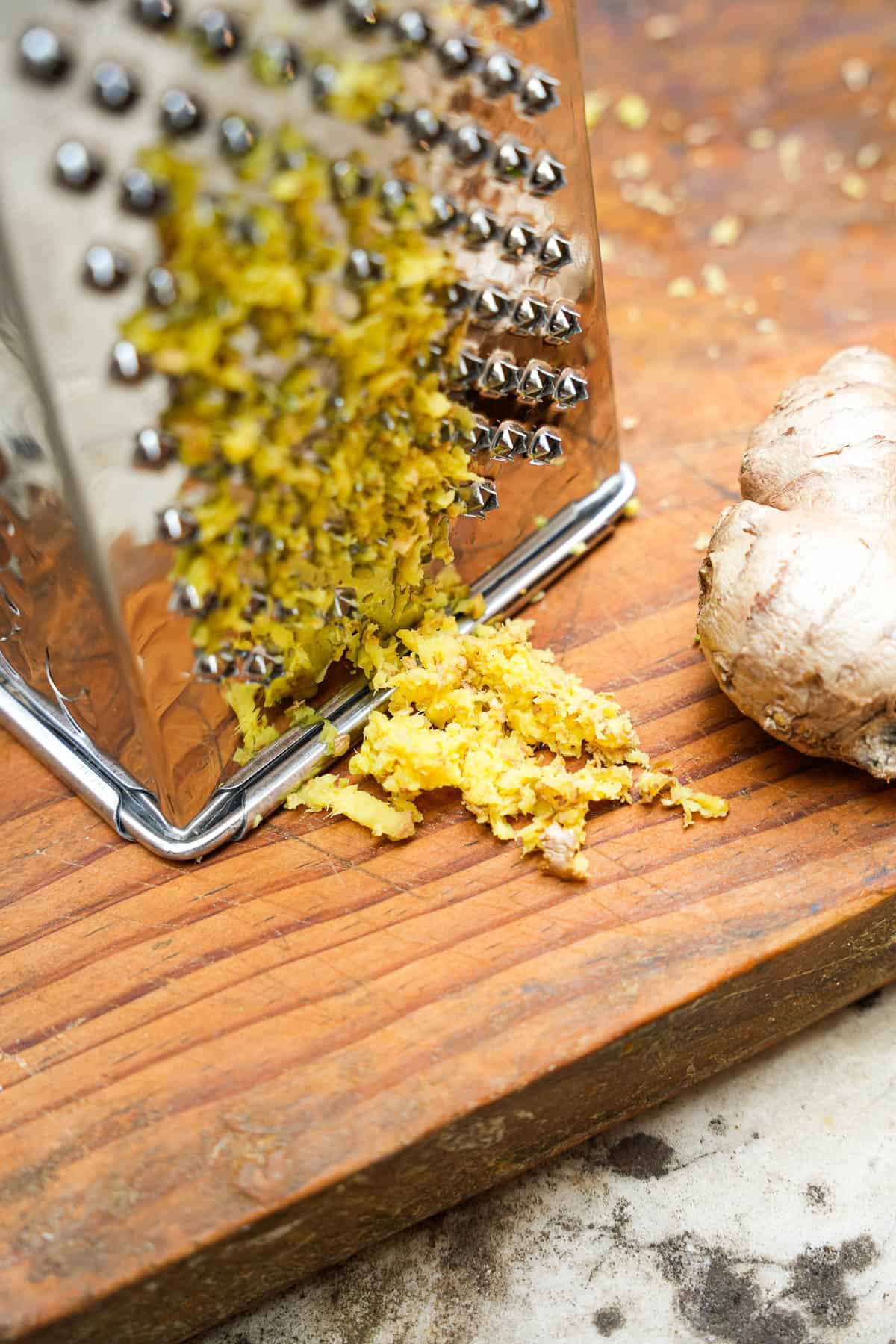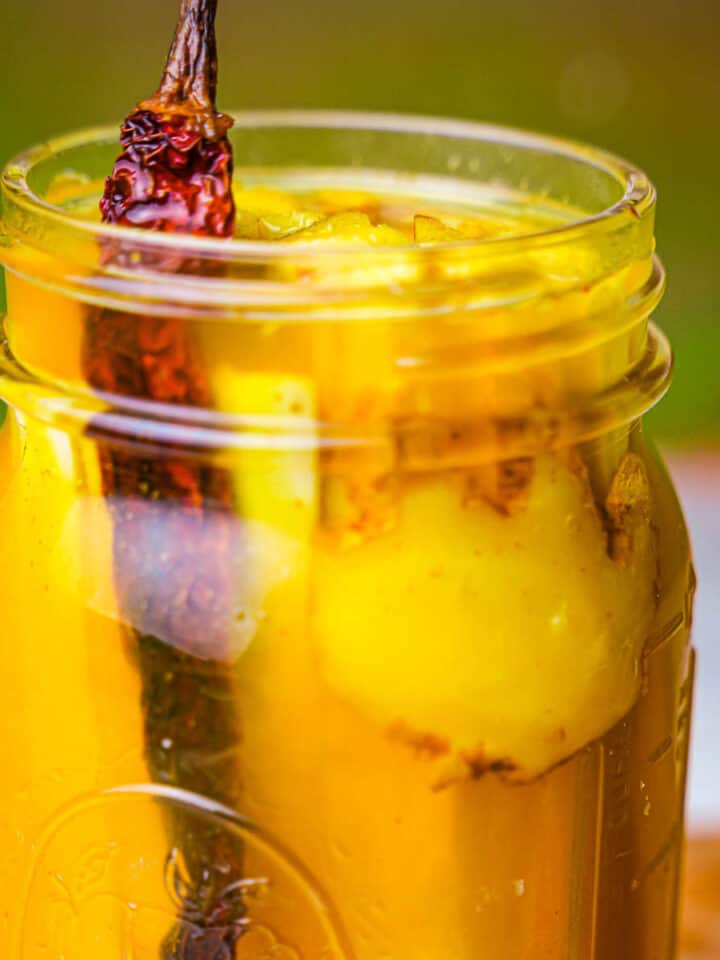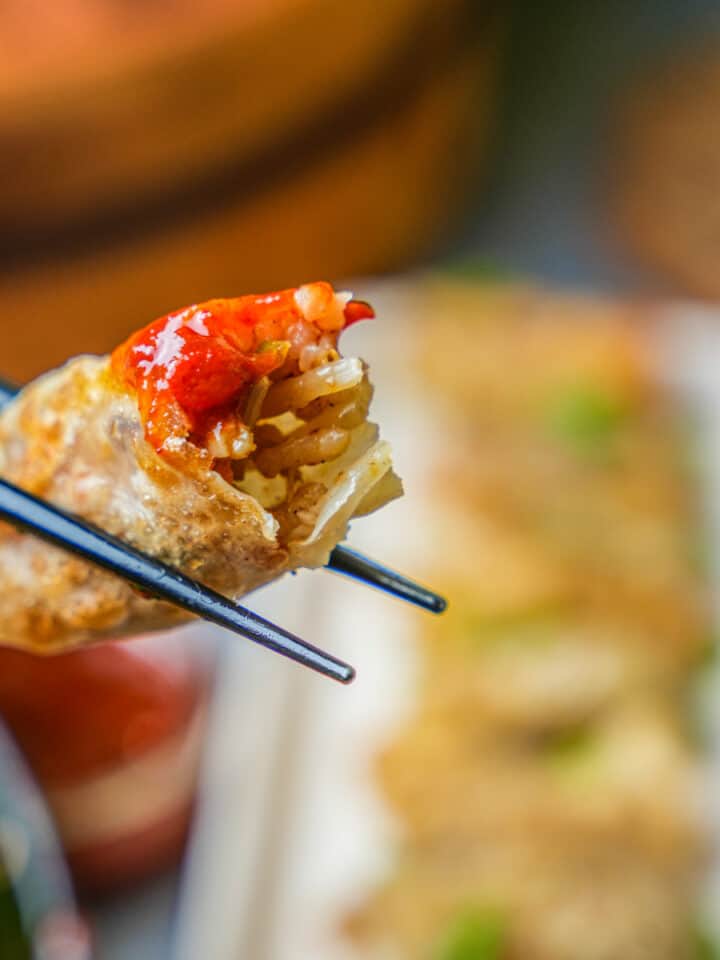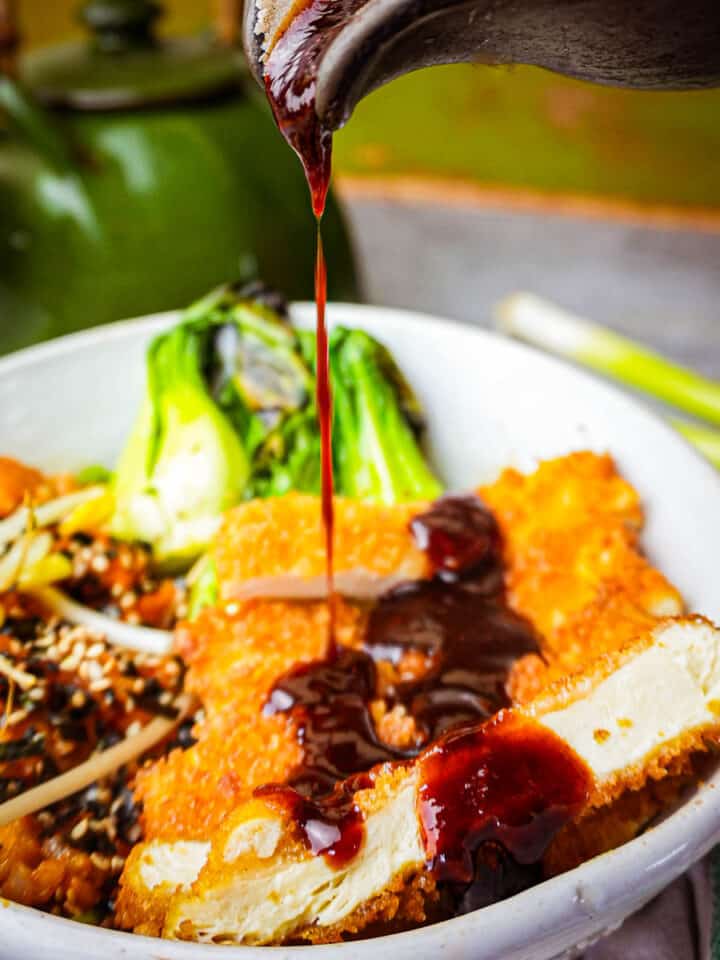*This post may contain affiliate links. Read more »
This goma dressing recipe is a lightening-fast, 100% plant-based sesame dressing that's found all over Japanese restaurant menus as a house salad dressing. In Japanese, the dressing is called ごまドレ (Go-mah-doe-ray). "Goma" means sesame and "Dore" is an abbreviation of Doresshingu (a Japanese word for dressing).


Enter your email & I'll send it to your inbox. Plus, get great new recipes from me every week!
By submitting this form, you consent to receive emails from Cinnamon Snail.
Nutritionally, there are some similarities with Tarator (Lebanese tahini sauce), but flavor-wise, it's a completely different story. With hints of ginger, a little creaminess from vegan mayonnaise, and the right balance of sweetness and acidity from rice vinegar, this balanced-tasting dressing will become one of your faves!
Jump to:
🤷♂️What is Goma Dressing?
Goma dare is a fast and nutritious salad dressing that is as ubiquitous in Japan as ranch dressing is in America, or vinaigrette is in France. This is the most popular Japanese dressing, and for good reason!
Sesame seeds, the primary ingredient in Goma dressing, have been cultivated in Asia for thousands of years. In Japan, sesame seeds were introduced during the Yayoi period (300 BCE - 300 CE) and quickly gained popularity due to their rich flavor, great nutritional benefits, and versatility in cooking. The use of sesame in dressings and sauces can be traced back to ancient Chinese and Korean culinary traditions, which influenced Japanese cuisine over time.
Over the centuries, the Japanese developed their own unique variations of roasted sesame dressings, refining the flavors and techniques. Goma dressing, as we know it today, began to gain prominence during the 20th century, particularly after World War II. The increasing availability of ingredients and the influence of Western cuisine led to a fusion of flavors, resulting in the creation of this beloved sesame salad dressing.
Goma dressing's rise in popularity can also be attributed to its health benefits. Sesame seeds are rich in essential nutrients such as calcium, iron, and healthy fats, making the dressing both flavorful and nutritious. In addition to being used on cold noodles, Japanese restaurants sometimes also include goma dressing as one of the dipping sauces for shabu shabu and Japanese hot pot.



👩🍳 Learn to make the BEST vegan Japanese food
This 5-day guide to my most popular Japanese recipes is 100% FREE, & you'll love the actual heck out of it 🥰
🥰Why you'll adore this goma dressing recipe
🙋♂️It’s great for you: Made with sesame seeds and other wholesome, simple ingredients, it offers a good source of essential nutrients, including TONS of calcium, healthy fats, minerals, and antioxidants.
😸Quick as a cat: Whether you're in a rush or simply prefer efficient recipes, be psyched! This dressing can be whipped up in under five minutes.
👍You probably already have what you need: This Japanese sesame dressing recipe requires only seven ingredients, and you will either already have them, or can easily find them at any grocery store!
🥒Vegan AF: Most Goma dressings are made with Japanese mayonnaise, which contains eggs. All of my vegan Japanese recipes are are completely plant-based, because we should all love, respect, and never harm animals!
🍶 Ingredients for Japanese sesame dressing

Tamari
Tamari, a type of soy sauce, offers health benefits such as being gluten-free and lower in sodium compared to traditional soy sauce. You can use shoyu, regular soy sauce, or coconut aminos if you don't have tamari.
Sesame Oil
Sesame oil adds to the sesame flavor of the dressing, and contains antioxidants, healthy fats, and vitamins, which can support heart health and provide anti-inflammatory properties. You can substitute it with other healthy oils like olive oil, flax oil, hemp oil, or avocado oil.
Sesame Seeds
Sesame seeds are a LEGENDARY source of calcium, iron, and fiber. My recipe calls for white sesame seeds, which you will toast before grinding, but you can use roasted sesame seeds, and skip the pan-toasting. If you want a creamy texture, swap the whole sesame seeds for Japanese sesame paste.
Rice Vinegar
Balancing the sweetness in the recipe, rice vinegar is low in calories aids digestion, and provides a tangy flavor to dressings. If you don't have rice vinegar, use other mild vinegars such as apple cider vinegar, white wine vinegar, rice wine vinegar, or lemon juice as substitutes.
Vegan Mayo
Vegan mayo is made by emulsifying plant-based fats with protein from soy, almond, or pea. I think this recipe tastes most authentic when made with my vegan kewpie mayo recipe. I have also made this recipe with unsweetened vegan yogurt, and it works great that way too.
*See the recipe card at the bottom of the page for exact quantities, nutritional info, and detailed cooking directions.
🤯 Japanese sesame dressing recipe variations
A few easy ways to tweak this recipe if you are feeling frisky:
🍋Add a splash of yuzu juice to add a Japanese citrus dimension to the dressing.
🍯Use miso paste in place of the tamari in the recipe. You may need to add a little water to thin out the final dressing, but miso adds a nice complexity.
🌶️Add a teaspoon of homemade sriracha, chili garlic sauce, or sambal oelek to add a little bite to the dressing.

📖 How to make goma dressing
Follow this step-by-step guide for making the dressing, or check out the easy-to-print recipe card towards the bottom of this page.

Step 1
Stirring regularly in a frying pan for a couple of minutes, lightly toast the sesame seeds over a low flame.

Step 2
Place the sesame seeds into a spice grinder, blender, or mortar and pestle, and grind them into a coarse meal.

Step 3
Grate the ginger with a box grater or microplane, or simply mince it as fine as possible by hand.

Step 4
Add the sesame seed meal and grated ginger to a bowl with the vegan mayo, rice vinegar, sugar, tamari (or other soy sauce), and sesame oil.

Step 5
Mix until smoothly combined.
🍽️Serving Ideas
The subtle sweetness of this creamy sesame dressing makes it great to chill out bitter leafy greens like frisée, or radicchio, but in general can also make your favorite salad shine.
Serve it on japanese salads to accompany my perfect tofu katsu, or drizzle it on steamed bok choy or nasu denkagu (miso glazed eggplant) to serve with my kimchi fried rice and vegan bulgogi.
Add this easy-to-make yamagobo to your Goma-dressed salads for a healthy burdock root crunch! Goma also makes a fantastic dipping sauce for treats like this crispy vegan fried chicken, or these rice dumplings with red jujube dates.
🤷♀️FAQ
Goma dressing is only gluten-free if it is made with tamari or coconut aminos. Most soy sauces contain wheat, and are not suitable for those with gluten sensitivities.
Most commercially available Goma dressings, and those used at restaurants, such as Kewpie, or other Japanese brands, have egg-based mayonnaise in them. When making Gomadore at home you can make it vegan by using plant-based mayonnaise.
🥶Refrigeration
Store the roasted sesame dressing in a sealed container or jar in the refrigerator. This will help maintain its freshness and prevent any potential bacterial growth.
Separation: Over time, the ingredients in the dressing may separate. Before using, give the dressing a good stir or shake to recombine the ingredients and restore its smooth consistency.
👵🏻Shelf Life
Goma dressing can be stored in the refrigerator for up to one week.
🙅♀️❄️ Don’t freeze!
The mayo, which is emulsified, will separate if you freeze and then thaw the dressing. It will look gross if you have frozen it, and you will make your salad cry and be upset at you for bathing it in terrible, frozen dressing! Goma is so easy and fast to make, so just make it fresh next time you need it!
✌️Goma dressing slaps with these:

Goma dressing Recipe (Japanese sesame dressing)
Equipment
Ingredients
- ¼ cup sesame seeds or roasted sesame seeds
- 1 teaspoon grated fresh ginger
- ¼ cup vegan mayonnaise
- 1 tablespoon rice vinegar
- 2 teaspoons sugar
- 1 teaspoon tamari
- 5 teaspoons sesame oil
Instructions
- Toasting the sesame seeds: In a frying pan over low heat, stir the sesame seeds until they are lightly toasted. This process enhances their nutty flavor. If you have pre-toasted sesame seeds, you can skip this step.
- Grinding the sesame seeds: Transfer the toasted sesame seeds to a spice grinder, blender, or mortar and pestle. Pulse or grind them until they form a coarse meal consistency.
- Preparing the ginger: Use a box grater or microplane to grate the ginger, or very finely mince it by hand.
- Combining the ingredients: In a bowl, add the ground sesame seeds, grated ginger, vegan mayo, rice vinegar, sugar, tamari (or alternative soy sauce), and sesame oil.
- Mixing the dressing: Stir all the ingredients until thoroughly combined, and the dressing has a smooth consistency. Take care to ensure that no lumps of sesame seed meal or ginger remain.
Notes
- Adjust the toasting time for the sesame seeds based on your preference, aiming for a light toasting without burning them.
- If a spice grinder or blender is not available, a mortar and pestle can be used to grind the sesame seeds.
- Taste the dressing and adjust the seasonings according to your preference. You can add more tamari, sugar, or rice vinegar to achieve the desired balance of flavors.
- Store the Goma dressing in a sealed container in the refrigerator for up to a week. Before using, give it a good stir to reincorporate any separated ingredients.

Enter your email & I'll send it to your inbox. Plus, get great new recipes from me every week!
By submitting this form, you consent to receive emails from Cinnamon Snail.









Linda says
This was amazing! I love Veganaise and am crazy about this Japanese dressings—my mouth is watering!
Michael Knight says
Made this incredibly easy and super delicious recipe last night. The creamy texture and nutty earthiness were big hits at the dinner table.
Definitely takes salads (and roasted veggies) to the next level!
KRB says
This came together quickly and will go great on a simple salad with dinner tonight. Tastes exactly like dressings I've had at japanese restaurants! Will definitely be another Cinnamon Snail recipe going into my regular rotation.